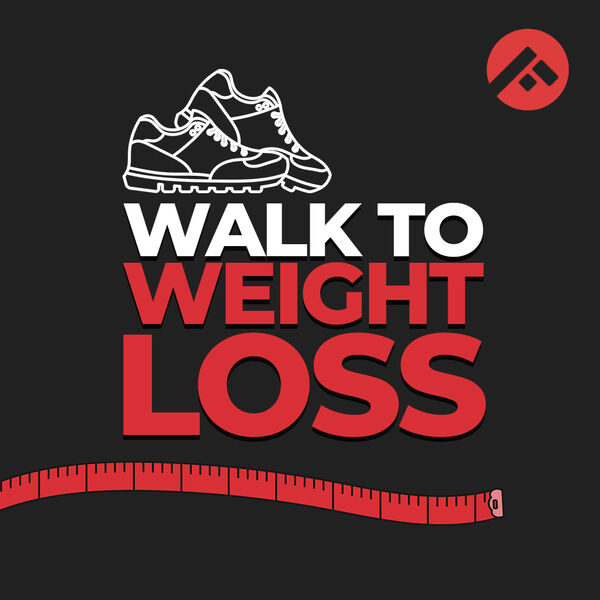
Does Indoor Walking Help Lose Weight?

Walking has consistently proven to be an effective mode of exercise for managing body weight, improving various health indices, lowering the risk of diseases, and boosting mental health. The typically prescribed setting for walking often involves the outdoors, where clean air and sunlight can provide a huge boost to one’s physiological and psychological health. Contrarily, being unable to walk or exercise outdoors may have very negative side-effects to the extent of suffering post-traumatic stress-like symptoms, which have been noted extensively within the COVID-19 literature. But exercising indoors might be a necessity in a pandemic-ravaged world punctuated by lockdowns. So, people are now being encouraged to walk and/or perform more interval-style training exercises from within the home setting.
Also watch: Does Walking Increase Your Immunity?
Advantages of indoor walking
Walking indoors can provide similar benefits to an outdoor workout, with some possible advantages that are unique to an indoor environment. The plus points of walking indoors include:
- Helps avoid environmental (weather) constraints
- Enables you to avoid traffic and excessive sun exposure
- Allows greater freedom in active-wear, which isn’t dictated by social norms or weather
- Has fewer terrain obstacles, allowing for better consistency within the workout
When walking indoors, it is important to keep in mind that changing the nature of the walk and adding some variety is key to maintaining consistency. However, varying the intensity or mode of the walking workout while indoors can be a little more difficult as opposed to outdoors, where the landscape can add natural variety. One way to include variety in indoor walking is by adding steps (indoor steps) or interval/resistance training to weekly workouts.
Are the benefits of walking indoors the same as walking outdoors?
There certainly appears to be some significant advantages to walking outdoors in terms of cognitive function. For example, in 2017, Bailey and co indicated that while walking indoors and outdoors produced significant cognitive improvement, the effects lasted longer for the outdoor walking group. In addition, outdoor walkers appeared to have more of a meditative state as measured by Electroencephalogram (EEG), which was maintained over a longer period. These effects may be heavily mediated by the fact that walking in outdoor environments appears to have numerous mental health benefits, including lowering stress and anxiety and boosting mood.
On the other hand, some evidence has postulated that exercising outdoors, either via walking or other forms of training, can expose people to air pollutants. Lower air qualities may adversely affect the cardiovascular function and increase oxidative stresses, which may contribute to a variety of poor health outcomes. However, more evidence is needed to further investigate these relationships before any conclusive recommendations can be made towards favoring either outdoor or indoor walking.
Factors to consider while walking indoors
When it comes to walking indoors, keep these aspects in mind to ensure safe and effective workouts:
1. Space
Unlike walking outdoors, indoor walking can be restrictive. When walking indoors, consider that you’ll most likely need to repeat your desired route over and over. Breaking up the walk into smaller bouts of higher intensities or adding some external resistance (ie, ankle weights) may be a better option to avoid overly repetitive routines.
2. Equipment
If increasing speed, distance, and intensity are part of your walking goals, finding a way to access a treadmill either by purchasing one or going to a gym that has this machine can be a great asset to walking indoors. A treadmill is adjustable in both speed and incline, which allows for more scaled intensities. Moreover, a pedometer and heart-rate monitor are fantastic additions to your workout, as they allow for accurate monitoring of exercise intensity and overall step counts. For instance, setting a goal like walking 10,000 steps/day rule can help keep you focused on the outcome at hand.
Also read: Treadmill Running: What Are the Pros and Cons
3. Accessibility
When choosing to walk indoors, make sure you have access to where you want to walk regularly. If you walk at home, accessibility is easy. But if you walk at a shopping center, you need to be able to get to the shopping center and can only walk when it is open. If you walk inside your office building, you need to find alternatives on days you’re not working, such as weekends, if your building isn’t open.
4. Safety
Although walking outdoors can increase the need for safety precautions such as battling changing weather conditions or uneven terrain, walking indoors can have safety risks as well. If you choose to walk on a treadmill, make sure you know how to operate the emergency shut-off switch if you need to stop walking immediately.
If you plan to walk up and down the stairs, make sure you have access to a handrail to maintain stability. And just as when walking outdoors, if you plan to walk at a public location, such as a shopping center, make sure you let someone know where you’re going and when your expected time of return is, in case of any emergencies.
Can you lose weight by practicing indoor walks?
Much like outdoor walking, walking indoors — either up and down the hallway or in-place — can be beneficial for weight loss if you reach high intensities. A key to maximizing the benefits of at-home walking workouts is by minimizing the sedentary (TV viewing) times and making the most of incidental activities. In addition, being active while watching TV can be a major benefit to encouraging weight loss. Even stepping/marching in place during commercials can increase the energy (calorie) expenditure and amount of activity performed during TV viewing.
How to increase your speed, intensity, and resistance while walking indoors
To help increase the intensity of walking indoors, consider adding an incline to include variety and burn more calories. This is mainly done on a treadmill, and so if you walk on a treadmill at your home or in a gym, try adjusting the incline to replicate hill walking. This will shoot up your heart rate dramatically, thereby raising the intensity of the exercise. But without the use of a treadmill, using stairs to add an incline to a home workout may be the preferred option.
Alternatively, if you do not have access to stairs or are walking in place, for instance while watching television, you may march ahead, raising your knees higher than you would on a regular walking step, for a fixed timeframe to pick up the intensity and replicate walking on an incline.
Changing the resistance indoors
You can add resistance to your walking workout by including light ankle or hand weights. Whether you walk in your home or a public area like a mall, you can bring your weights with you to use during your walk. Some people find that performing more resistance exercises such as shoulder presses with light weights while walking or adding lunges to a walk is easier to do at home compared to outdoors, where they’re concerned with uneven terrain or environment/social factors.
Changing walking speeds indoors
If you have access to a treadmill, adjusting your speed can be quick and easy. But changing the speed while walking from home can be more difficult. In this instance, it is advisable to increase the walking speed by covering a greater distance in a shorter time. For instance, if you cover a distance of 10m in 4 seconds, the goal should be to cover 10m in 3.45 seconds, and then slowly keep reducing the time to 3.30 seconds and so on.
Put together, there are several advantages of walking from within the home setting. Individuals should aim to cover at least 4,000 steps per day, with the ideal goal of achieving between 7,500 steps–10,000 steps/day. Using a treadmill, stairs, or external resistance can be excellent strategies to maintain consistency and avoid repetitive workouts. When performed consistently, with high intensities, walking indoors may elicit meaningful changes in weight loss.
References
1. Pouso S, Borja Á, Fleming LE, et al. Contact with blue-green spaces during the COVID-19 pandemic lockdown beneficial for mental health. Sci Total Environ 2021; 756: 143984.
2. Füzéki E, Groneberg DA, Banzer W. Physical activity during COVID-19 induced lockdown: recommendations. J Occup Med Toxicol 2020; 15: 25.
3. Dominski FH, Brandt R. Do the benefits of exercise in indoor and outdoor environments during the COVID-19 pandemic outweigh the risks of infection? Sport Sci Health 2020; 1.
4. Bailey, AW, Allen G, Herndon J, et al. Cognitive benefits of walking in natural versus built environments. World Leis J 2018; 60: 293-305.
5. Stieb D, Shutt RH, Kauri LM, et al. (2021). Associations between air pollution and cardio-respiratory physiological measures in older adults exercising outdoors. Int J Environ Health Res 2021; 31: 901-14.
6. Steeves JA, Thompson DL, Bassett DR Jr. Energy cost of stepping in place while watching television commercials. Med Sci Sports Exerc 2012; 44: 330-5.













